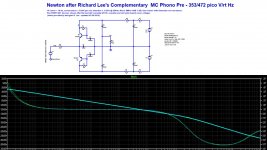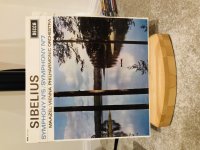Would it be simpler to build a version with higher z minimum requirement fitting more mainstream loads, and would such an alternative version measure better you think?
Cheers!
Cheers!
Mostly impresses me when mega-contributers have succesfull companies, busy keeping up with demand, but still time to post at all hours of the day. Often productive in diying at the same time. My projects take a year+ generally. I can sometimes long for retirement, but I really need work for a rythm.
Cheers!
I ‘retired’ in May 2016. No way I can sit around or grow vegetables. Best time to start a small business if you’ve worked in companies your whole adult life is after you retire. You can always consult or sub- contract and you get to decide how much you will do.
Stephen Hawking said ‘never stop working’ and given his issues, it certainly worked for him.
To quote again Bob Pease "my best programming language is Solder". In despite I worked quite some time on simulation software. Nah, change that "In despite" to "because" 😀.
I've taken another look at the Newton (aka powered Duraglit) and I am getting quite good PSRR per the attached implementation. (Vinoise on this amplifier only is 242 pV/rt Hz)
aboos, how were you measuring PSRR?
How is this circuit supposed to function ?
The cart on one side is directly connected to gnd and the other side is connected to gnd via a 100uF cap.
Hans
Question here for the experts. Can an SME 3009 be used with MC carts? I have no knowledge about high/low compliance cartridges and what kinds of arms they should be partnered with.
Maybe George/Bill have an opinion?
Maybe George/Bill have an opinion?
Which version? There were 4 main variants of wildly varying effective mass. It gets complex with the SIII unless you use damping, but I am trying to find time to research candidates and test them in mine.
Well, my story is I gave away my original SME 3009 and 'converted' to a cheap CD in 1993. I've been rooting around on ebay and will twist the other half's arm to let me spend a few hundred bucks on a replacement arm - I'm looking at some used SME's. some of them are silly money ($2000 - $9000) and I will not be going there. There are quite a few SME 3009 'Improved' around the $400-600 mark, and a stock SME 3009 (which is what I had) at the lower end of this price range, with a few going for a bit less. I probably want to partner it with a mid priced MC cart (Ortofon, Hana etc).
Problem is I have no clue on this effective tip mass/compliance thing or how these different arms even perform. My Michel has the basic arm on it (If understand correctly this is a basic Rega Arm).
Problem is I have no clue on this effective tip mass/compliance thing or how these different arms even perform. My Michel has the basic arm on it (If understand correctly this is a basic Rega Arm).
Managed to source this immaculate Sibelius vinyl - I had to have it after a guy walked into our room at NWA and asked if we would play it. He told me it is considered one of the best classical recordings ever made. This copy is from 1966.
Attachments
This article desribes exactly what is required to set up a tonerm cartridge combo. You need the effective mass of the tonearm and the dynamic compliance of the cart. When looking up the cart datasheet, look for the dynamic compliance spec.- the static compliance can be quite different. And look at the frequency for which this dynamic compliance has been measured - you need the value for low frequencies in the 10 Hz range as this is the range where the resonance will be (Most cart brands specify in such a way but Audio Technica e.g. often specs at 100 Hz, which is quite useless as the values between 10 and 100 Hz can differ by a factor of up to 10). Then resonance frequency can easily be calculated. If you got a too light arm, effective mass can be pushed up a litlle bit by using a havier headshell.
In a previous post you asked how i simmed PSRR:
- replace cartridge with a 5R or 10R resitor to ground
- put AC input voltage source insread in series with the power supply DC source, in case of a dual supply only into one leg.
- measure gain from AC input to output. The inverse of the gain will be the PSRR.
In your Newton example, the PSRR is mostly due to the PS rail low pass filtering (1k series R and 470µF cap). The amp itself only has a quite low figure. In case of floating supply, the amp itself without any PS filtering already has PSRR of more than 40dB. With a floating supply, PS noise is common mode and suppressed by the sym. amp while with a dual supply with ground connection, noise is a differential signal and does not get canceled.
In a previous post you asked how i simmed PSRR:
- replace cartridge with a 5R or 10R resitor to ground
- put AC input voltage source insread in series with the power supply DC source, in case of a dual supply only into one leg.
- measure gain from AC input to output. The inverse of the gain will be the PSRR.
In your Newton example, the PSRR is mostly due to the PS rail low pass filtering (1k series R and 470µF cap). The amp itself only has a quite low figure. In case of floating supply, the amp itself without any PS filtering already has PSRR of more than 40dB. With a floating supply, PS noise is common mode and suppressed by the sym. amp while with a dual supply with ground connection, noise is a differential signal and does not get canceled.
Re the cart<>Arm thing, thanks for that. I've been doing a bit of reading so its clearer to me now how to match the two.
For the battery powered vs +-15 Duraglit, I think the filtering I propose renders the PSRR differences between the two essentially null and void for all practical purposes.
For the battery powered vs +-15 Duraglit, I think the filtering I propose renders the PSRR differences between the two essentially null and void for all practical purposes.
syn08;5863467 I am happy to report that the MC did not care about feeding a virtual ground said:Should you at some point down the road decide to part with this as your stack of phono stages is too large I would be happy to negotiate a suitable exchange.
To quote again Bob Pease "my best programming language is Solder". In despite I worked quite some time on simulation software. Nah, change that "In despite" to "because" 😀.
We used to have a poster on the wall saying 'Trust not thy simulator let the results beguile thee'. Given the simulator in question was horrendously difficult to drive these were wise words. In these days of a set of masks costing upwards of $10^6 I have massive admiration for those with the skills to be able to get it right first time.
This article desribes exactly what is required to set up a tonerm cartridge combo.
I don't wish to throw this thread too much OT, but that article is at best a starting point. There are many more confounders which are hard for the DIY'er to get into as the measurement gear gets somewhat expensive. I am mulling a plan to start a thread on this exact topic spurred on by some experiments I want to try and some comments a while back from syn08.
And FWIW I'm very much a believer in getting arm/cart resonances into the 11-14Hz area. Basically as high as possible. This can be tricky to achieve.
Any specific reason why 11-14 Hz and not the lower range suggested by Ortofon?
A decent sub-sonic filter will be down 20 dB at ~8 Hz and about half that at ~14 Hz.
A decent sub-sonic filter will be down 20 dB at ~8 Hz and about half that at ~14 Hz.
Panyotis Kriditis is doing some cool mechanical stuff (experiments etc) over here:-
Floating Tangential Tonearm
Floating Tangential Tonearm
bill, I should caution that this is appears to be the lesser Leach variant from #311 rather than true Duraglit. But it's a simple (?!!) matter to remove 6 bits and change 2 resistors to get the, at least 3dB, Vni improvement of true Duraglit. 🙂 It's likely PSR is also improved but I would want to confirm this in real life. There is no evidence that lesser variants give the advantages for World Peace and better sex life of true Duraglit. 😀Should you at some point down the road decide to part with this as your stack of phono stages is too large I would be happy to negotiate a suitable exchange.
You would then have a 'Solar Powered Duraglit' SPD which take over the title of the lowest noise MC head amp in the known universe 😱 but this specific device hasn't been actually tried in real life.
I share Bob Pease's motto .. especially for this design and at these SOTA noise levels ... so am eager to see a real life test of SPD with a real life vinyl playing system. If it works out, Bonsai has an alternative to compare for cost, performance & simplicity with his souped up Newton with supadup PSUs. 🙄
_________________________
Thanks for the PSR plots, Hans & aboos
_________________________
Coming back to LN Electrolytics ... Gerhad, is this, 10PX3300MEFC10X20 Rubycon | Capacitors | DigiKey the cheapo Aluminium Electrolytics that you found good for LN? If so, Rubycons from the same range are probably OK
I think we need to document what has tested LN performance in da 21st century.
_________________________
Resonance frequency
It's a pity Ortofon don't have specific Tone Arm Mass recommendations for their cartridges. As Danes, they were most certainly involved in the B&K Naerum tests, AES and B&K Review articles on the subject.
Measuring cartridge compliance is a bag of worms, but it is relatively simple to measure accurate Tone Arm Mass. What you do is make a
- short (about 30cm) pendulum
- check it has the textbook period, then
- connect the bob to the Tone Arm headshell
- check the change in period
Pls xcus me if I dun have da maths at my fingertips but I neber wen to skul 😱
A subsonic filter is too late to remedy the time modulations caused by the warp spectrum. An actively driven tonearm could offer some further options (has been done commercially, but only in the vertical plane IIRC.)
All good fortune,
Chris
All good fortune,
Chris
- Home
- Source & Line
- Analogue Source
- Richard Lee's Ultra low Noise MC Head Amp

